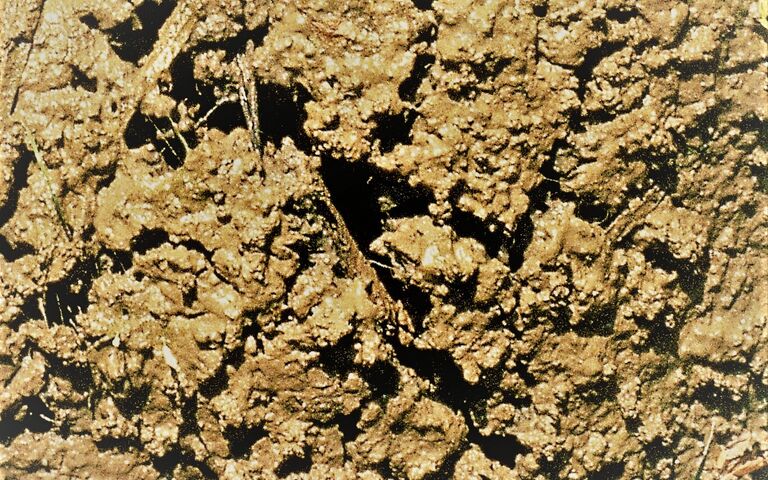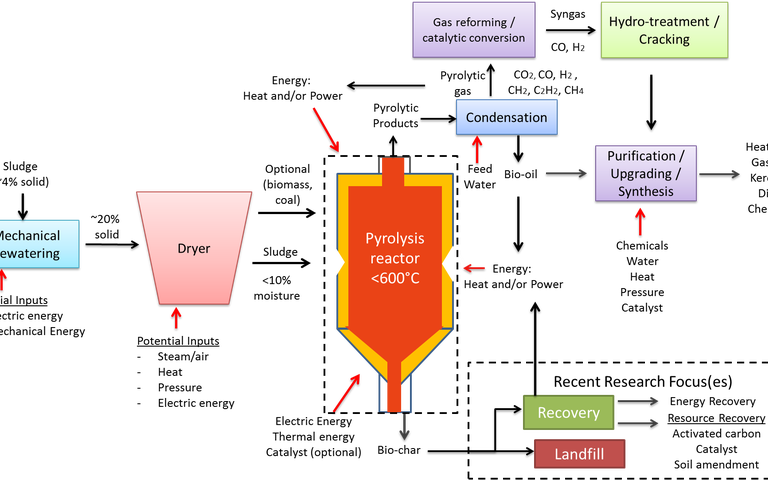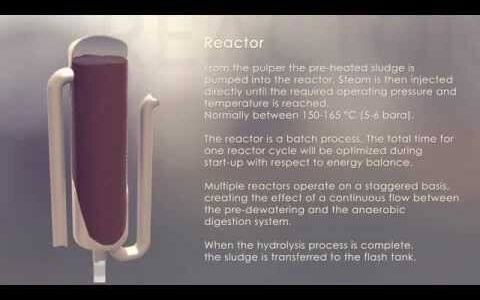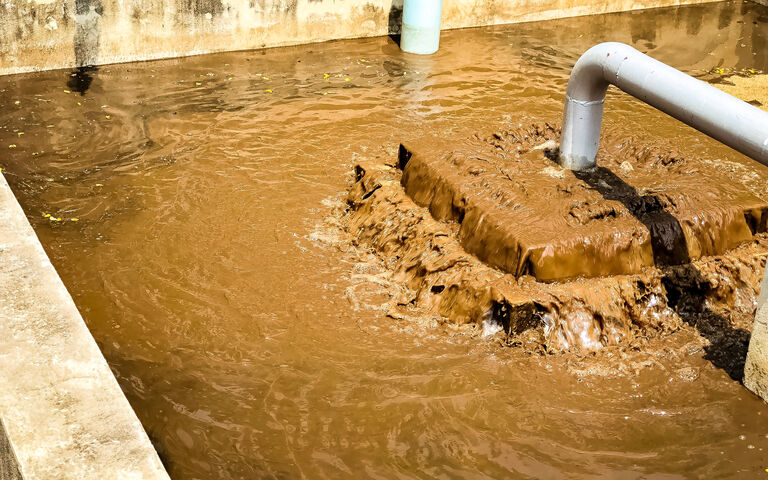Upgrading AD biogas − ten research papers

Improving the calorific value of AD biogas
Our list is presented in reverse chronological order without preference. It was compiled by Simon Judd in March 2021 and may be updated in future as new papers are published.
There are basically two ways of increasing the calorific content (methane and/or hydrogen concentration, in effect) of biogas. One is to take the biogas from the regular AD process and strip out as much of the CO2
and any other non-combustible or otherwise problematic gases as possible. The other way is to adjust the operating conditions of the anaerobic reactor itself to promote the bio-generation of the combustible gases.
Stripping out the CO2 and other acid gases is relatively straight-forward – amine scrubbing, membrane separation and pressure swing adsorption, to name but three – are all proven methods – but where’s the fun in that? A lot of the research papers published since the start of 2019 have focused on the microbiological route. And, it appears that there are a few different approaches to this, including:
- enhanced acidification using zero-valent iron (scrap metal) or through process control
- dosing with ash
- ferric dosing, coupled with biogas recirculation
- microbial electrochemical conversion of carbon dioxide to methane, and
- promoting hydrogenotrophic methanogenesis through hydrogen injection.
So, here’s an arbitrary selection of abstracts from papers, including a review article and a full-scale case study, authored by research groups from across the world: Australia, China, Cyprus, Denmark, France, Germany, Italy, Iraq, Japan, Russia, Spain, Taiwan, and the US. Yes indeed, upgrading is truly international.
- Selected research papers:
Abstract
Cheese whey is an easily biodegradable substrate with high organic matter that can be anaerobically digested to biogas; however, the process is often inhibited by excess acidification due to the presence of undissociated volatile fatty acids and requires considerable concentration of alkaline buffer. The current study investigates a new approach for biogas upgrading, and increase of total CH4 in conjunction with buffering acidification by using zero-valent iron (powder and scrap metals at concentrations 25, 50, and 100 g/L) in anaerobic granular sludge and cheese whey under mesophilic batch conditions.
During the first 2 cycles (total 34 days), a high performance was found in anaerobic bottles with 25 g/L powder zero valent iron (PZVI) and 50 g/L scrap zero valent iron (SZVI) since they had a higher total CH4 production compared to anaerobic bottles free of ZVI, as well as 97% CH4 composition in produced biogas compared to 74% CH4 for anaerobic bottles free of ZVI.
Under these conditions, no additional NaOH was added to anaerobic bottles with 25 g/L PZVI and 50 g/L SZVI to increase the pH and at the end of 2nd cycle the concentration of VFAs was substantially lower compared to the anaerobic bottles free of ZVI. However, no positive effects of ZVI in terms of alkaline buffer were found at the 3rd and 4th cycle probably due to ZVI inactivation outer surface layer. Based on the experimental findings (anaerobic bottles: (a) 25 g/L PZVI, (b) 50 g/L SZVI and (c) free of ZVI) an economic comparison for anaerobic digestion of cheese whey by large scale was contacted and pointed out that the best scenario was the anaerobic digestion by addition of 50 g/L SZVI, followed by anaerobic digestion free of ZVI and last was the anaerobic digestion by addition of 25 g/L PZVI. This study highlights a new proof of concept for in-situ biogas upgrading and alleviation of acidification by addition of 50 g/L SZVI or 25 g/L PZVI during anaerobic digestion of cheese whey.
© 2020 Elsevier LtdFull Reference
Charalambous, P., & Vyrides, I. (2021). In situ biogas upgrading and enhancement of anaerobic digestion of cheese whey by addition of scrap or powder zero-valent iron (ZVI). Journal of Environmental Management, 280 111651
Abstract
Biogas is a sustainable energy vector with diverse input sources (e.g. landfills and anaerobic digestion of waste materials, wastewater treatment sludge, manure from animal production, or energy crops) and diverse applications. The nature of the substrate and the design of the biogas production process determines the composition of raw biogas. All types of biogas must be cleaned and upgraded before delivering to the consumers and in practice, the key challenge of the biogas supply chain is its cleaning and upgrading to consumers quality.
The physicochemical technologies used to clean and upgrade the raw biogas are reliable, mature and at high technology readiness levels. This paper critically reviews the biogas supply chain including feedstock supply, biogas production and upgrading/cleaning processes, potential hazards of biogas contaminants, product specification based on applications, and biogas/biomethane uses. The biogas cleaning and upgrading technologies with emphasis on cost comparison are assessed.
In summary, the upgrading technology alternatives and their associated costs are found substantially affected by the project-specific circumstances. For instance, upgrading with chemical scrubbing might be preferred in the availability of cheap on-site thermal energy. If the biomethane is planned to be injected into high-pressure natural gas pipelines, those upgrading methods operating at relatively high pressures (e.g. membranes) would be preferred. If the biomethane injection point to the gas grid is located distant from the production site, the distribution cost will also play a determinative role in the overall biogas supply chain economics. Among all these factors, plant capacity seems to be a pivotal element in the economics of biogas supply chain. Amendments to national and sub-national support schemes are also an important factor affecting investment decisions.
© 2020 Elsevier LtdFull Reference
Rafiee, A., Khalilpour, K. R., Prest, J., & Skryabin, I. (2021). Biogas as an energy vector. Biomass and Bioenergy, 144 105935
Abstract
The high costs involved in sewage sludge treatment and disposal in wastewater treatment plants (WWTPs) not only bring about improper sludge disposal and thus environmental pollutions, but also limit the investment on construction of WWTPs, especially in rural areas or low-income regions. This comparative study examined the effect of biogas recirculation coupled with chemical addition in a semi-continuous anaerobic digester for sludge treatment, which was proven to achieve biogas upgrading, phosphorus conservation and sludge conditioning simultaneously, largely reducing the sludge treatment cost. Results show that FeCl3 addition coupling biogas recirculation can improve sludge dewaterability by 94% in comparison to 75% by equivalent MgCl2 addition, and 97% phosphorus in digestate can be conserved in solid with formation of vivianite-like crystals. Biogas recirculation can enhance CH4 yield and content by 13% and 11%, respectively, likely attributable to the increased relative abundances of both hydrogenotrophic Methanomicrobiales and acetoclastic Methanosarcinales.
© 2020 Elsevier LtdFull Reference
Yuan, T., Wang, Y., Nuramkhaan, M., Wang, X., Zhang, Z., Lei, Z., Shimizu, K., Utsumi, M., Adachi, Y., Lee, D.J. (2020). Coupling biogas recirculation with FeCl3 addition in anaerobic digestion system for simultaneous biogas upgrading, phosphorus conservation and sludge conditioning. Bioresource Technology, 315 123811
Abstract
Microbial electrochemical system is a promising CO2-to-CH4 conversion technology that can upgrade raw biogas to high calorific content for downstream applications. The development of efficient, robust, and cost-effective biocathode is the pivotal issue for its industrial application. In this study, intact anaerobic granular sludge (AGS), which was the conventional biocatalyst in anaerobic digestion processes for high-efficiency CH4 production, was for the first time employed as biocathode in electromethanogenesis system (EM) for biogas upgrading. The applied voltage (0, 3, 4, and 5 V) and biogas flow rate (5.22–23.43 mL/h) were modulated to optimize biogas upgrading performance in the AGS-EM system. The CH4 content in treated biogas could reach as high as 97.9 ± 2.3% at an applied voltage of 4 V and a gas flow rate of 17.79 mL/h. The system showed superior stability and anti-interference ability in the continuous operation mode for 2 months. 16S rRNA sequencing results showed that Methanobacterium and Azoarcus were the dominant populations in biocathode. The AGS-EM system obtained an energy benefit of 477.3 kJ/molbiogas, and economic benefit of 446.4 EUR/m3biogas. The novel AGS-EM system showed the promising perspectives for the industrial application in the field of biogas upgrading and renewable energy storage.
© 2020 Elsevier LtdFull Reference
Zhou, H., Xing, D., Xu, M., Su, Y., & Zhang, Y. (2020). Biogas upgrading and energy storage via electromethanogenesis using intact anaerobic granular sludge as biocathode. Applied Energy, 269 115101
Abstract
To augment renewable energy production and utilize surplus wind energy during low-demand intervals, hydrogen produced through electrolysis may be injected into anaerobic digesters in order to increase the energetic content of biogas through promotion of hydrogenotrophic methanogenesis (4H2 + CO2 → CH4 + 2H2O). In this work bubble-free hydrogen injection was investigated in at pilot scale using various membranes. The reactor was then inoculated with anaerobic sludge from a municipal digester which had been pre-adapted to elevated H2 levels; due to selective methanogenesis and simultaneous CO2 removal, gas phase methane concentrations initially increased by a factor of 36% over the theoretical maximum from the anaerobic degradation of glucose during continuous tests. However, a shift in the acid spectrum toward propionate and a deficit in acetate led to intermittent periods during which diminished acetoclastic methanogenesis reduced overall biogas production. Maximum H2 dosing rates were derived for anaerobic digestion of glucose.
© 2019 Elsevier Ltd.Full Reference
Cuff, G., Nelting, K., Trautmann, N., & Mohammad-pajooh, E. (2020). Production and upgrading of biogas through controlled hydrogen injection for renewable energy storage. Bioresource Technology Reports 100373
Abstract
Two-stage anaerobic reactors are being widely used in the organic waste management industry. In these reactors, up to one-third of the chemical oxygen demand (COD) content is naturally pre-acidified in a first stage pre-acidification (PA) and then fed to a second stage digester for conversion to methane. Traditionally, all the generated gases from the PA tank will be vented to the atmosphere. Hydrogen and carbon dioxide are the main gases generated in the PA tank. A pilot-scale of two-stage anaerobic expanded granular sludge bed reactor was fabricated and used to investigate the impact of the PA gas injection into the second stage. The gas from the PA reactor was captured and stored in the storage tank. The tests were run under two temperature ranges and five organic loading rates (∼2, 3, 4, 5, and 6 g COD/L.day). For mesophilic range, the biogas production and energy yield increased by 10–90% and 40–130%, respectively, from without PA gas injection case compared to with PA injection case. For thermophilic range, the biogas production and energy yield increased by 12–40% and 90–140%, respectively, from without PA gas injection compared to with PA injection case. For each OLR, the gas production and energy yield were 90 to 160% more in thermophilic range than the mesophilic range for the cases with and without the PA gas injection. This implies that a higher temperature range has a significant impact on energy yield in a digester. One of the important findings was the amount of the PA gas injected into the EGSB reactor should be less than 50% of the theoretically calculated hydrogen gas based on ethanol substrate assumption.
© 2020 Informa UK Limited, trading as Taylor & Francis Group.Full Reference
Al-Rubaye, H., Smith, J. D., Shivashankaraiah, M., Yu, J., Ghorbanian, M., Alembath, A., & Al-Abedi, H. (2020). The pre-acidification gas impact on upgrading the biogas produced in expanded granular sludge bed reactor. Biofuels, 1772608
Abstract
Biogas from anaerobic digestion (AD) of waste activated sludge (WAS) limited its utilization due to low value-added. In this study, an innovative addition mode for ash known as stepwise addition was developed to enhance methane production and improve CO2 scavenge from AD of sludge. Experimental results confirmed stepwise addition of ash improved methane content to 79.4%, compared to control group (69.1%). Compared to Pulse addition and Control, the cumulative CH4 production was promoted by 39.2% and 35.4%, respectively. Investigation of the mechanism indicated that stepwise addition of ash could decrease hydrolytic and acidifying enzyme activities but increase activity of coenzyme F420, compared to pulse addition group. Furthermore, stepwise addition of ash not only increased the abundance of Methanomassiliicoccus (34.48%), but also promoted amounts of CO2 capture. This method ameliorate utilization availability of sludge ash for sludge anaerobic digestion through promoting cumulative methane production and increasing CO2 storage capacity.
© 2019 Elsevier LtdFull Reference
Yin, C., Shen, Y., Yu, Y., Yuan, H., Lou, Z., & Zhu, N. (2019). In-situ biogas upgrading by a stepwise addition of ash additives: Methanogen adaption and CO2 sequestration. Bioresource Technology, 282, 1-8
Abstract
In-situ upgrading of biogas in a mesophilic anaerobic digester of sewage sludge by sparging H2 through a membrane was studied. Large gas recirculation rates were required to facilitate H2 transfer to the bulk liquid phase; at ∼200 L Lreactor−1 d−1, H2 utilization efficiency averaged 94% and the specific CH4 production increased from 0.38 L Lreactor−1 d−1, during conventional digestion, to 0.54 L Lreactor−1 d−1. Sludge digestion was not compromised by elevated H2 partial pressure nor by the associated rise in the pH (8.1) because of CO2 removal. In this regard, VFA accumulation was not detected and the performance of VS removal was similar to the observed without H2 supply. Microbial analysis revealed that homoacetogens were outcompeted by hydrogenotrophic methanogens. Methanoculleus sp., Methanospirillum sp., Methanolinea sp. and Methanobacterium sp. were the hydrogenotrophic archaea present over the experiment.
© 2019 Elsevier LtdFull Reference
Alfaro, N., Fdz-Polanco, M., Fdz-Polanco, F., & Díaz, I. (2019). H2 addition through a submerged membrane for in-situ biogas upgrading in the anaerobic digestion of sewage sludge. Bioresource Technology, 280, 1-8
Abstract
A feasibility analysis, to assess the suitability of converting the biogas produced in an existing anaerobic digestion plant to bio-methane, was carried out. The case study plant was equipped with a micro-gas turbine co-generator. Several upgrading systems of different sizes were considered, to determine the most suitable configuration from a thermodynamic and economic point of view. For this purpose, a model of the whole plant that included digesters, a micro-gas turbine, a sludge line, heat transfer loops, and heat exchangers was developed. A steady-state simulation was performed by using the daily average conditions for the one-year long operation of the plant. The results highlighted that the feasibility depended on the amount of bio-methane produced, as this affected the performance of the cogeneration system and the balance between the costs and revenues. When large amounts of biogas are upgraded to bio-methane, the heat provided by the micro-gas turbine during the winter season is not sufficient to keep the digesters at the desired temperature and, therefore, natural gas integration is necessary. In addition, by increasing the upgrading unit size, the amount of electric energy purchased by the grid increases accordingly. An economic analysis showed that the optimal upgrading system size was strongly dependent on the bio-methane selling price.
© 2019, The authorsFull Reference
Baccioli, A., Ferrari, L., Guiller, R., Yousfi, O., Vizza, F., & Desideri, U. (2019). Feasibility analysis of bio-methane production in a biogas plant: A case study. Energies, 12(3)
Abstract
Within the European circular economy roadmap, it is important for wastewater treatment plant (WWTP) to recover energy and become energy-neutral or energy-positive. A rapid hydrogenotrophic methanogenic culture enrichment strategy capable of limiting the organic degradation unbalance and allowing a fast start-up phase of the in situ biogas upgrading reactors, at pilot- or full-scale, was developed. The method was tested with two, plus one control, laboratory-scale continuous stirred tank reactors filled with anaerobic sludge collected from a fullscale WWTP. The experiment lasted 50 d and was divided into five phases: the anaerobic digestion start-up followed by four H2 injection phases (H2/CO2 ranging from 1:1 to 4:1 on molar basis). Despite a temporary slight increase in the total concentration of volatile fatty acids during phase II (2.56 gCH3COOH·L-1), and in phase III a mild pH increase (anyway, below 7.4) indicating the expected CO2 depletion, the strategy proposed was effective. In the last phase, in the biogas, a CH4 content of about 80% was achieved, suggesting that the use of H2/CO2 above the stoichiometric value could further improve the biological biogas upgrading.
Full Reference
Corbellini, V., Catenacci, A., & Malpei, F. (2019). Hydrogenotrophic biogas upgrading integrated into WWTPs: Enrichment strategy. Water Science and Technology, 79(4), 759-770

Professor Simon Judd has over 30 years’ post-doctorate experience in all aspects of water and wastewater treatment technology, both in academic and industrial R&D. He has (co-)authored six book titles and over 200 peer-reviewed publications in water and wastewater treatment.
In his capacity as director of Judd Water & Wastewater Consultants, Simon is co-owner of SludgeProcessing.com, as well as of our sister website The MBR Site. He was Professor in Membrane Technology at the Cranfield Water Science Institute at Cranfield University in the UK from 1992 until 2021. Simon was also a Research Chair at Qatar University in the Middle East for six years until September 2018.





